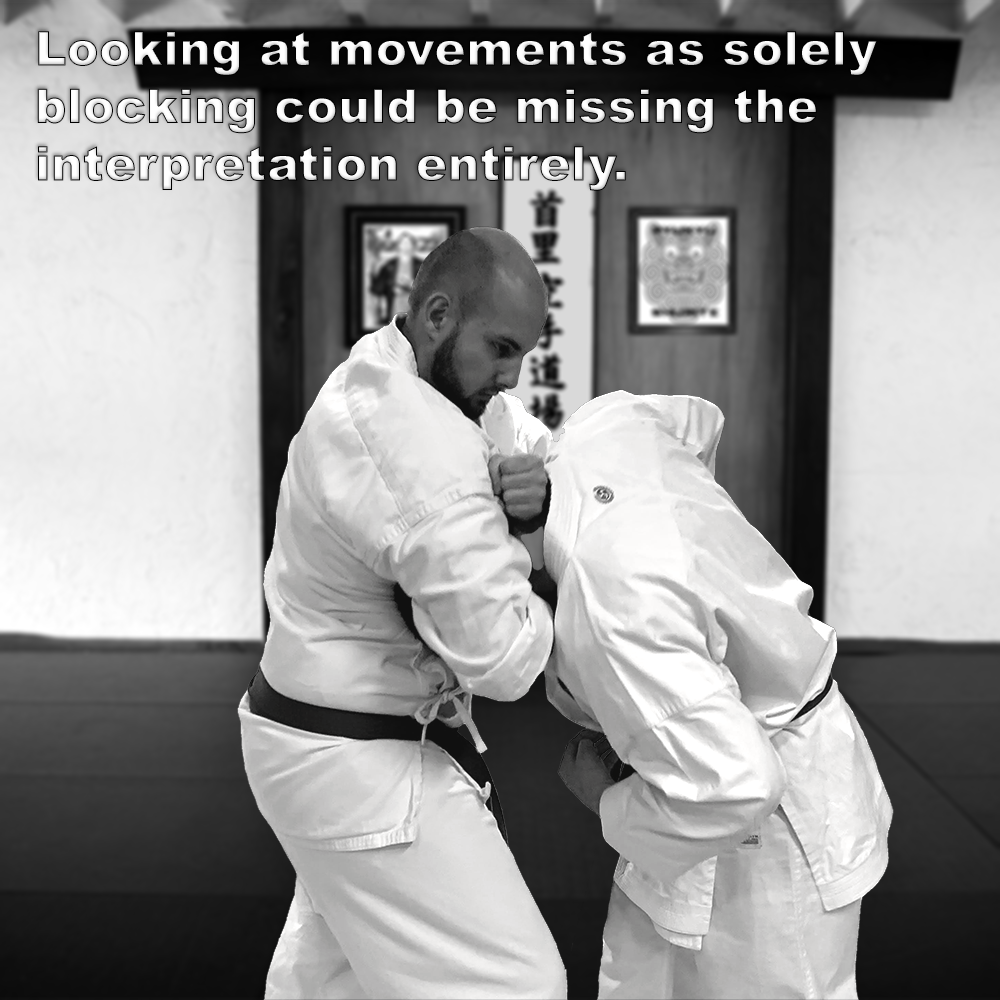
Uke-waza (受け技), the Japanese term many practitioners translate as “blocking techniques”, by now practitioners should know that a better translation is “receiving techniques”.
.
When you think of uke-waza with the latter translation in mind, it can open up a lot of doors in your training.
.
It is often stated that there are no blocks in kata. I think this is too simplified. When you think about it, imagine being lost in your thoughts and a surprise attack confronts you, a flailing arm heading towards your face just caught in your peripheral vision. What do you do?…… You block, or at least lift your arms to protect and cover. It’s instinct. You raise your hands to protect yourself, you’ve missed the pre-emption stage and you’ve been caught unawares. This movement is often called the flinch response.
.
However, blocks should not be thought of as pure “stopping” techniques. This is where blocking starts to fail. By stopping any force coming towards you dead in its tracks, even if your technique is powerful, you have effectively given the attacker another free go at trying to hit you again. And this is where the flinch response can be developed into more.
.
The goal in any kind of attack, if you can’t escape, should be to control the opponent’s body or limbs, specifically by not going “force against force”, after all you won’t always be the strongest. The movements that have been described as blocks have been taken out of context and misinterpreted. Attempting to use the FULL movement of a block against someone trying to hit you will fail miserably. Reaction will always be slower than action.
.
Therefore, practitioners should be taught to develop a strong base of body-shifting (tai-sabaki) and body-transition (tenshin).
.
With tai-sabaki and tenshin, you should no longer be thinking of stopping attacks at the end of the fist or forearm. Rather, you should be moving around, getting off the attackers center-line, looking for an angle, to get to a more dominant position of the opponent.
.
The block becomes far less “atemi” (concussive force) and far more subtle or blended.
However, at any point along the movement, you should be able to apply atemi and/or initiate joint techniques/controls (kansetsu-waza), or throws (nage waza).
.
A closed hand in Okinawan kata could mean a grip; grabbing, pulling, holding, tearing, not necessarily a fist punching. Therefore looking at movements as solely blocking could be missing the interpretation entirely.
.
We use the (so called) blocks to place an opponent where we want them to be, rather than stop an attack force on force. To use blocks successfully as blocks, it is largely dependent upon having predetermined knowledge of an attack, which assumes that you are aware of what you opponent is about to do….. You never are!
.
Blocking and countering can work really well when you have distance and recognizable technique. This is what we see when martial artists perform demonstrations or dojo sparring, fighting each other in a consensual fight. However, in a self-protection context, which is what the kata were created for, it is way closer, much faster, and much more chaotic.
.
The bottom line though is that certain movements are ineffective when demonstrated as blocks, however they are effective when applied as strikes, grabs, locks, and throws, etc.
.
Combative efficiency is often revealed when you look beyond the labelling and nomenclature of modern karate techniques and think about the movement in its entirety, from beginning to end.
.
.
Photo Credit: Two senior students at the Shuri Dojo utilizing the movement from “age uke”.
.
.
